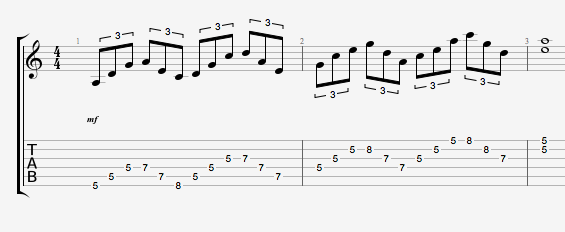Personally I find this varies with the passage. I’m very comfortable rolling with the first finger, and less so with the others, probably the least with the third finger. My basic MO is to roll with first, but do alternating fingers with 2 3 and 4, but again it depends on the passage.
I tell students to explore the pros and cons of each depending on the passage, but shoot for finding non-rolling options to start, as I think they are generally cleaner and easier to manage and speed up.
I’ve seen a variety of instructional material, some telling you to never roll and some saying to become a roll master. For example, Andrew Green’s Jazz Guitar Technique: never roll. Jack Grassell’s Monster Chops: Roll, roll, and roll some more.
So often the best answer seems to be ‘depends.’
Here’s a musical example where I would likely roll with the first finger, but not for any/many of the 7th and 8th fret bits. A good challenge by the way is to try this same pattern in the other pentatonic positions…brings about a lot of fingering challenges where you have to really calculate whether you want to roll or not. Sometimes I think rolling really makes sense.

Doesn’t surprise me that much that Frank is a roller as I think he does quite a lot of quartal lines, no?


